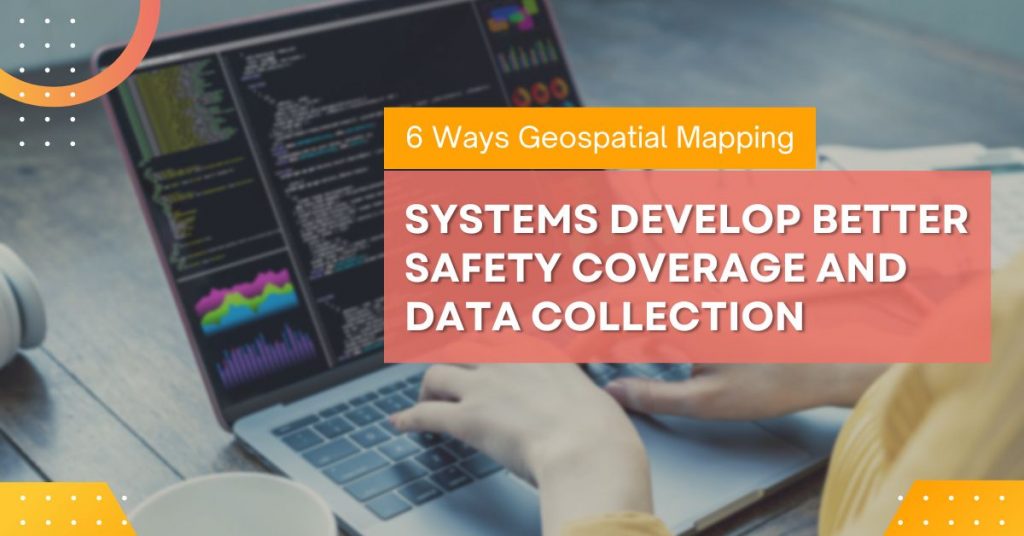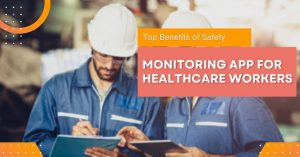6 Ways Geospatial Mapping Systems Develop Better Safety Coverage and Data Collection
Business administrators and executives are now using technology to assist with making important decisions. The geospatial mapping software system is a technology now used by businesses to analyze information based on geography. Developing better decision-making with a geospatial mapping software system is common in many commercial industries.
Many business organizations still rely on complex manual systems of paper, forms, and spreadsheets. Inefficient data collection for field workers puts managers at risk of receiving inaccurate or incomplete data reports. Collecting information through geospatial mapping systems provides more interactivity in the database records in maps.
The Importance of Geospatial Mapping Software System to Business
Numerous industries employ a geospatial mapping software system to improve data collection. The geospatial mapping system enables the analysis of data of the following:
- Environmental
- Demographic
- Topographic
These three categories allow effective information collection from geospatial mapping system applications. The data collected from the system applies to different industries, which helps enterprises make the best decisions.
Modernizing company systems and operational procedures can be challenging. For workers, mapping the work site means better safety in the field. Occupational safety management includes a modern mapping approach to respond to an emergency in a specific area.
What are the Applications of a Geospatial Mapping Software System to Worker Safety?
Business operations need to integrate a safety net for their remote field workers. Combining efficient emergency management with better planning, analysis, and action empowers workflow. When properly applied, geospatial mapping assists emergency responders in taking the necessary action to help workers quickly.
Here are some instances of how enhanced occupational safety supervision by a geospatial mapping system benefits industries:
- Preparing emergency response teams such as ambulances and paramedics in case of work accident
- Tracks workers and assets who are working alone in an area.
- Gathering essential data regarding workplace incidents
- Additional information on current maps
- Digitized documents and forms
Six Essential Features of Geospatial Mapping System for Enhanced Welfare and Security
As a company owner protecting your energy assets and workers, geospatial mapping systems become an asset for expansion. The geographic data is vital for real-time awareness, operational intelligence, and marketing, and the geospatial system also enhances worker welfare.
Here are essential features of a geospatial mapping software system that helps enhance the welfare and data security:
1. Indicators that Highlight Important Sites on the Map
The indicators on the map include construction sites seen from different viewpoints. Using mapping technology, administrators can highlight essential locations on the map with precise coordinates. The geospatial mapping system should be able to make room for all records, data, and information of the company.
2. GIS-Based Evaluation of Data and Safety Issues
A system for occupational safety management can assist in ascertaining data for insight that helps with finances and avoiding lawsuits. Locating dubious areas or repeating problems is made possible by a well-designed geospatial mapping system that visualizes incident percentages.
3. Tracking Single Worker
Industrial sectors that deploy individual workers to an area benefit significantly from a geospatial mapping system. Users who work alone can utilize any device with a compatible safety management system. The safety system also doubles as a satellite phone option in a place with an unavailable signal.
4. Tracking Workers and Equipment in Different Areas
Using geographical data from online mapping systems tracks firm assets and team members’ whereabouts. The system’s mobile app can frequently log in to the users’ coordinates when they check-in. The software can instantly ascertain the workers’ last recorded coordinates in case of an accident or issue.
Administers can monitor equipment, other assets, and workers by entering asset maintenance forms or using third-party GPS monitoring. This tracking feature works in mining, energy, gas, and construction industries that send out workers in fields.
5. Digitized Forms and Documents
Papers can get lost and misplaced. Once these papers with crucial data get lost among the files, it isn’t effortless to store information. Unlike paper forms, workers can modify information through the website. When a worker completes a digital document in the app, the webpage is immediately retrieved to fill out form fields swiftly.
Digitally enhanced productivity is easier to safeguard businesses from bogus form submission and access.
6. Customized Map Indicators and Shading
A safety management software allows indicators in maps for extra layers of information simultaneously with the current data. Administrators can use personalized shading indicators to track progress when managing massive projects. The right tools provide countless possibilities for geographic visualization.
Interaction with the Right Technology
WorkAware geospatial mapping software system provides insight into the field and the executive suite. Leading firms integrate the system to improve work streams of:
- Service personnel
- Risk analysts
- Business planners
- Business executives
WorkAware is a vital tool as a business information tool.




